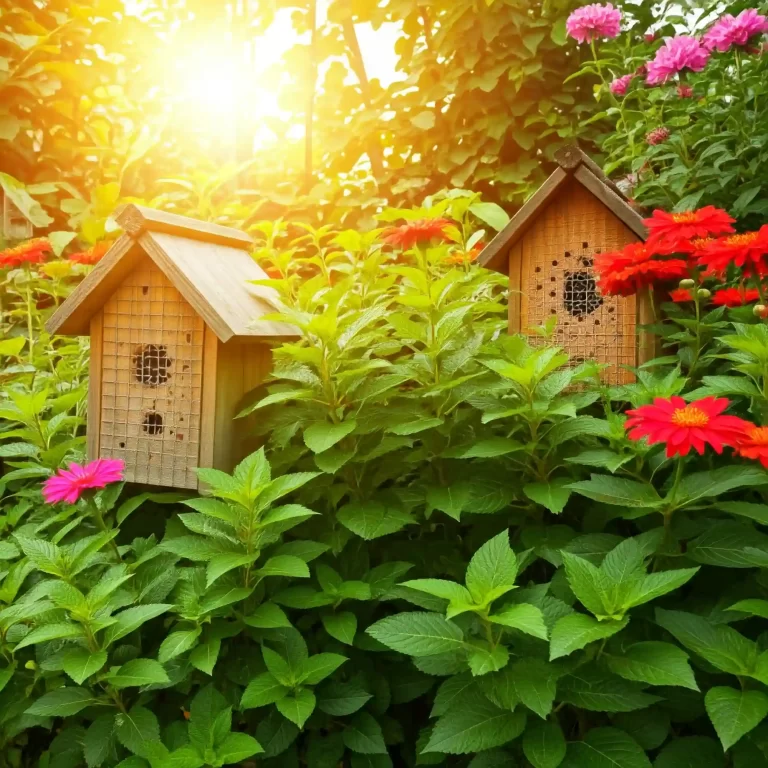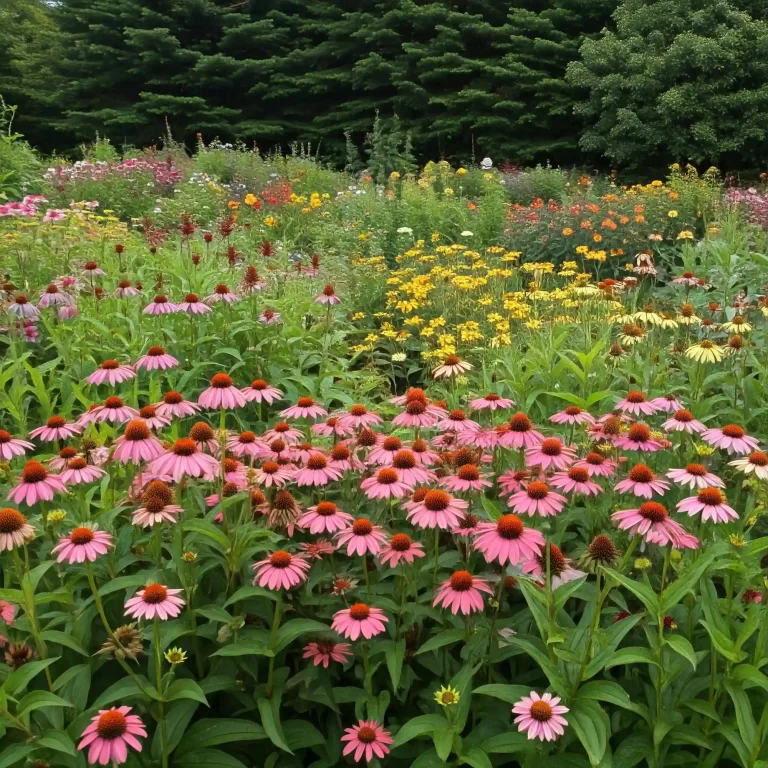Key Takeaways:
- Healthy soil is a living ecosystem brimming with beneficial microbes that fight off pests and diseases naturally.
- Building healthy soil improves water retention, nutrient availability, and overall plant health, leading to a thriving, pest-resistant garden.
- Simple practices like composting, cover cropping, mulching, and reducing tillage can dramatically improve your soil health.
Many gardeners underestimate the importance of soil. They see it as just a place to stick a plant and pour on the water. But the truth is, healthy soil is the secret weapon for a thriving, pest-resistant garden.
This article dives deep into the fascinating world of soil health and pest resistance. We’ll explore how creating a vibrant soil ecosystem full of life benefits your plants in surprising ways, keeping those pesky critters at bay.
The Magic of Healthy Soil: A Haven for Beneficial Beasties
Imagine your soil teeming with a microscopic army of good guys – bacteria, fungi, nematodes, and other creepy-crawlies all working tirelessly for your garden’s success. This diverse cast of characters makes up the soil food web, and they’re the real heroes when it comes to pest control.
Here’s how these beneficial organisms keep your garden healthy:
- Predatory Power: Nematodes, ladybugs, and other beneficial insects love to munch on garden pests like aphids, grubs, and slugs. A healthy soil ecosystem provides them with a plentiful food source, keeping pest populations in check naturally.
- Disease Defense: Beneficial bacteria and fungi compete with harmful pathogens for space and resources. This competition helps prevent diseases from taking hold in your plants.
- Plant Powerhouse: Microbes in healthy soil break down organic matter, releasing essential nutrients for your plants to thrive. Strong, healthy plants are naturally more resistant to pests and diseases.
Beyond Bug Bashing: The Perks of Healthy Soil
Building healthy soil isn’t just about keeping the nasties away. It offers a whole host of benefits for your garden:
- Improved Water Retention: Healthy soil acts like a sponge, soaking up and holding onto water more effectively. This means less frequent watering for you and happier, more resilient plants.
- Nutrient Powerhouse: Microbes in healthy soil break down organic matter, releasing essential nutrients like nitrogen, phosphorus, and potassium directly to your plants’ roots. No more expensive fertilizers needed!
- Better Structure: Healthy soil has a good balance of air, water, and minerals, allowing for proper root development and drainage. This leads to stronger, more vigorous plants.
Signs of Healthy Soil
| Characteristic | Healthy Soil | Unhealthy Soil |
|---|---|---|
| Colour | Dark and rich brown | Pale or grey |
| Texture | Crumbly and easy to work with | Clumpy or hard-packed |
| Drainage | Drains well but retains moisture | Water pools or drains too quickly |
| Smell | Earthy and pleasant | Musty or foul odor |
| Earthworm Activity | Abundant earthworms present | Few or no earthworms |
Building Your Soil Superhero Squad: How to Create a Pest-Resistant Paradise
Now that you understand the importance of a healthy soil ecosystem, it’s time to take action! Here are some simple practices you can implement to create a haven for beneficial organisms and build a pest-resistant garden:
Composting: Kitchen scraps, garden waste, and yard trimmings are goldmines for your soil. Composting transforms these materials into nutrient-rich compost, feeding the soil food web and promoting healthy plant growth.
Cover Cropping: Planting cover crops during the off-season adds organic matter to the soil, suppresses weeds, and helps prevent erosion. Cover crops also fix nitrogen from the air, making it available to your plants in the following season.
Mulching: A layer of mulch around your plants helps retain moisture, regulate soil temperature, and suppress weeds. Additionally, as the mulch decomposes, it feeds the soil food web with valuable organic matter.
Reduce Tillage: Excessive tilling disrupts the soil food web and harms beneficial organisms. Consider no-till gardening or minimal tilling techniques to keep your soil ecosystem thriving.
Plant Diversity is Key!
Planting a variety of plants in your garden not only creates a beautiful space, but it also helps maintain a healthy soil ecosystem. Different plants attract different beneficial insects, creating a diverse and resilient habitat that naturally discourages pests.
Companion Planting for Pest Control
| Plant | Companion Plants | Deters |
|---|---|---|
| Tomatoes | Basil, Marigolds | Aphids, Tomato hornworms |
| Carrots | Onions, Chives | Carrot flies |
| Lettuce | Marigolds | Aphids, Whiteflies |
Nurturing Your Soil Superheroes: Maintaining a Thriving Ecosystem
Creating a healthy soil ecosystem isn’t a one-time fix. Here are some tips to nurture your beneficial beasties and keep your soil performing at its peak:
- Regularly Add Organic Matter: Compost, composted manure, or green manure (cover crops turned under) are all excellent ways to continuously feed the soil food web and replenish organic matter. Aim to add a layer of organic matter a few inches thick around your plants each year.
- Water Wisely: While healthy soil retains moisture well, underwatering can stress plants and disrupt the soil food web. Water deeply and infrequently, allowing the soil to dry slightly between waterings.
- Rotate Your Crops: Planting the same crops in the same location year after year can deplete specific nutrients and encourage soil-borne diseases. Rotate your crops each season to maintain a healthy balance in the soil.
- Monitor Your Soil pH: Soil pH affects nutrient availability. Aim for a slightly acidic to neutral pH (around 6.0-7.0) for most vegetables. A simple soil test kit can help you determine your soil’s pH and take steps to adjust it if necessary (note: crushed eggshells or coffee grounds can help lower pH, while adding lime can raise it).
Beyond the Basics: Advanced Techniques for Soil Health
For the truly soil-obsessed gardener (and we commend your dedication!), here are some advanced techniques to further enhance your soil ecosystem:
- Biochar: This charcoal-like substance, created by burning organic matter in a limited oxygen environment, can improve soil fertility and water retention.
- Microbial Inoculants: These commercially available products introduce beneficial bacteria and fungi directly to your soil, giving your soil food web a boost.
- Vermicomposting: Worms are nature’s composting champions. Setting up a vermicomposting bin allows you to create nutrient-rich worm castings (castings tea can also be a great fertilizer) for your plants.
Patience is a Virtue: Building Soil Health Takes Time
Remember, building healthy soil takes time and dedication. Don’t get discouraged if you don’t see results overnight. Consistent practices like composting, mulching, and minimizing tillage will gradually create a thriving soil ecosystem that benefits your plants for years to come.
Conclusion:
By prioritizing soil health, you’re not just nurturing your plants, you’re creating a vibrant mini-ecosystem that naturally combats pests and promotes a thriving, beautiful garden. With a little effort and these simple techniques, you can unlock the hidden potential of your soil and cultivate a garden that flourishes naturally!


